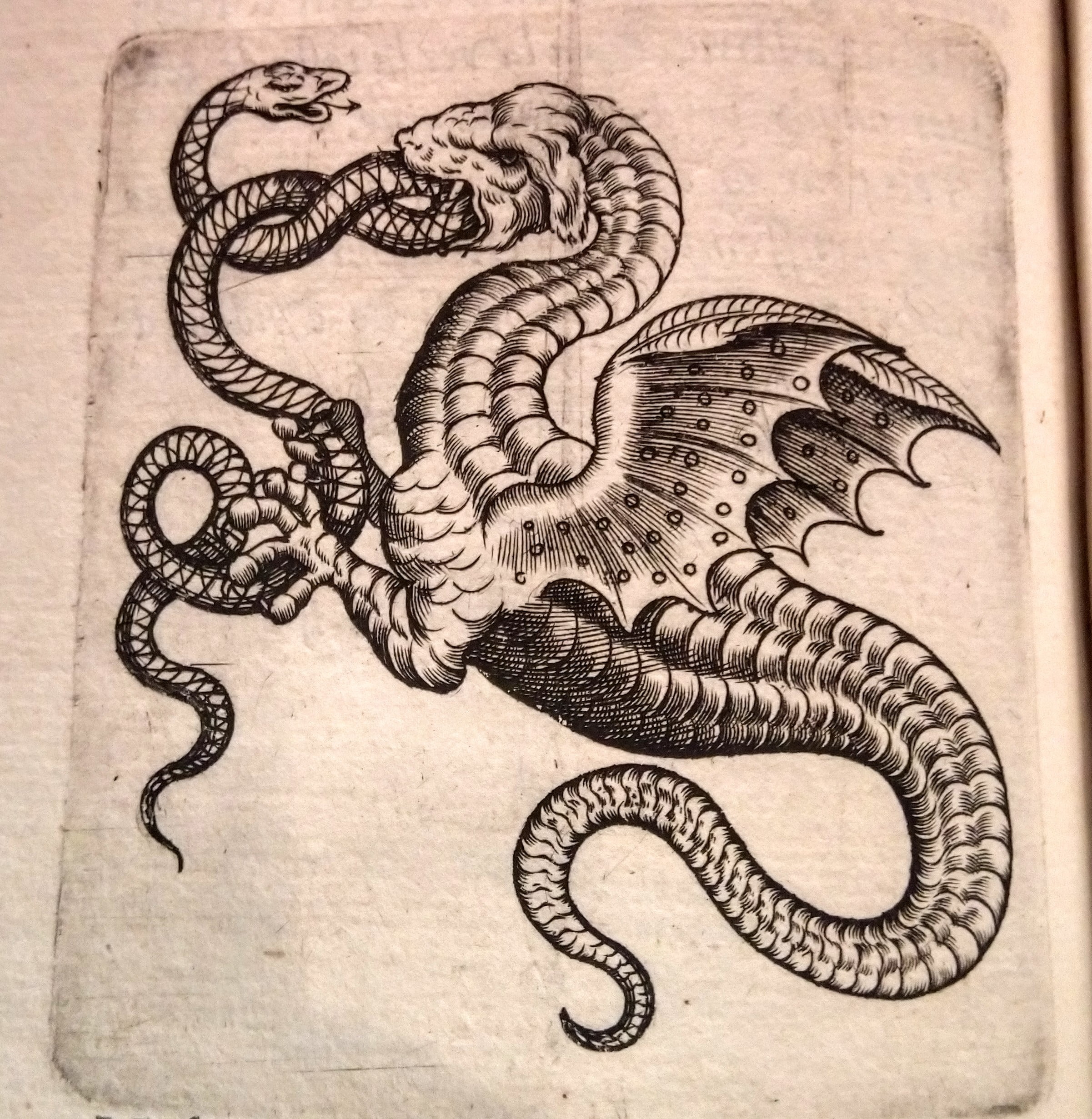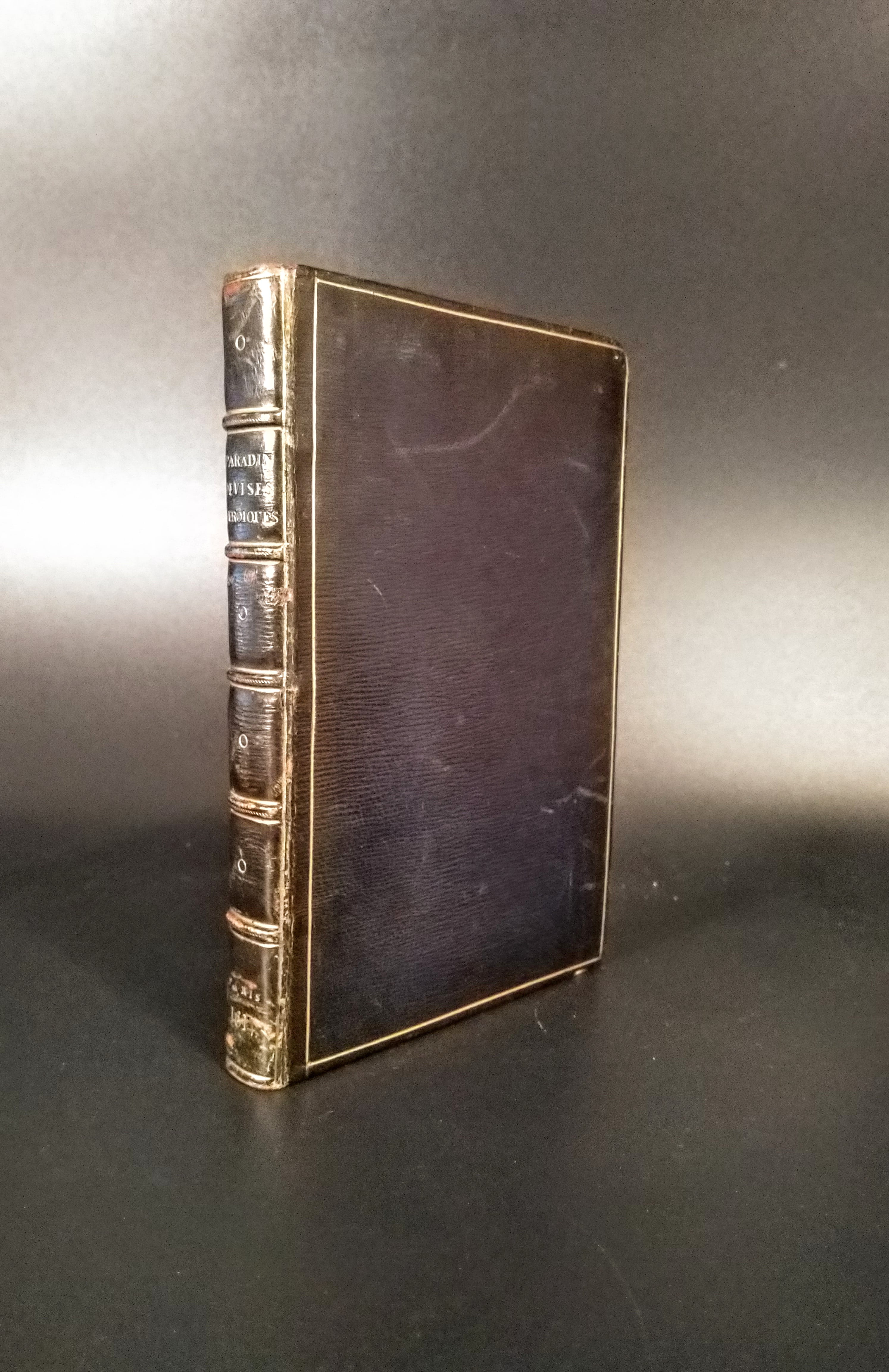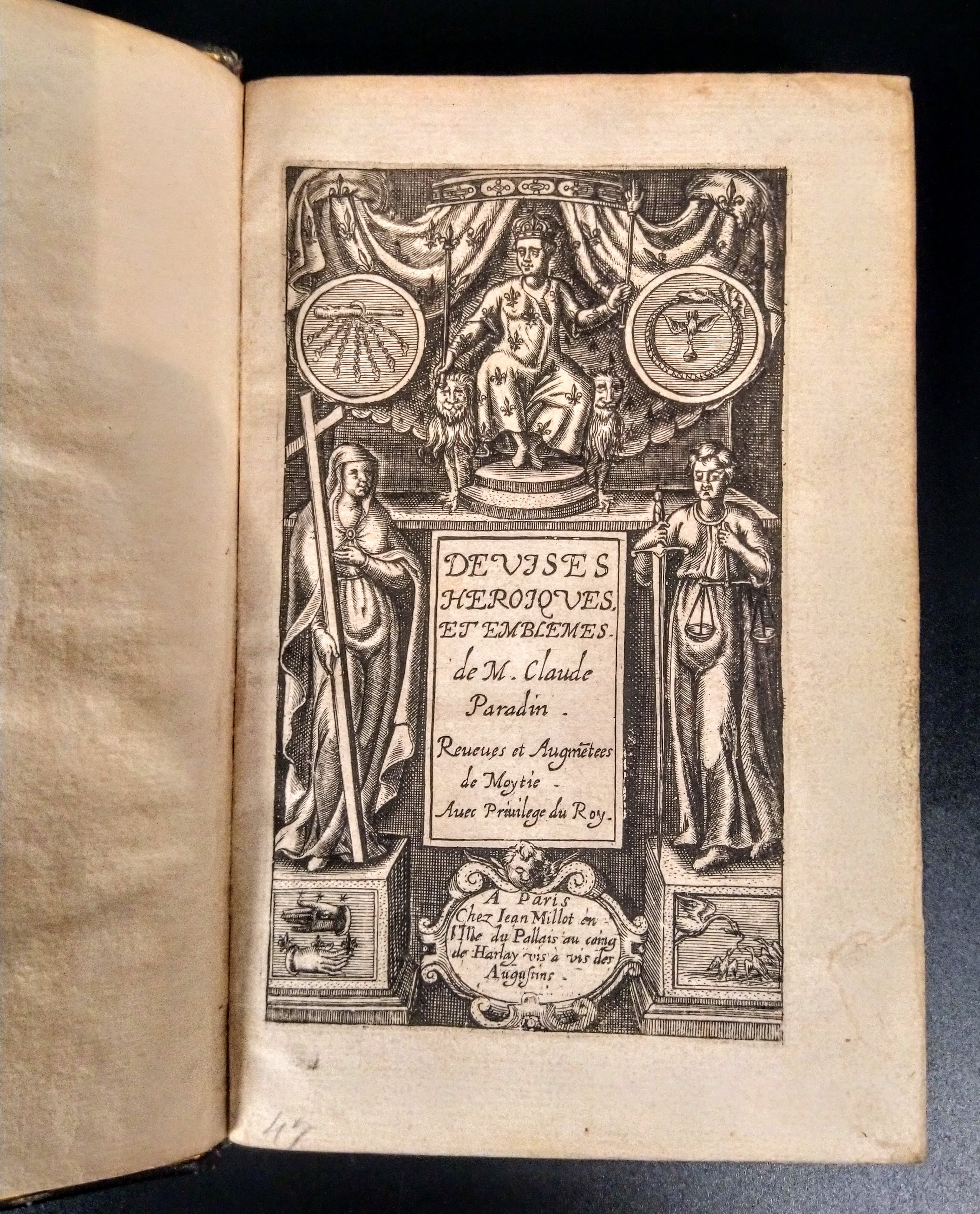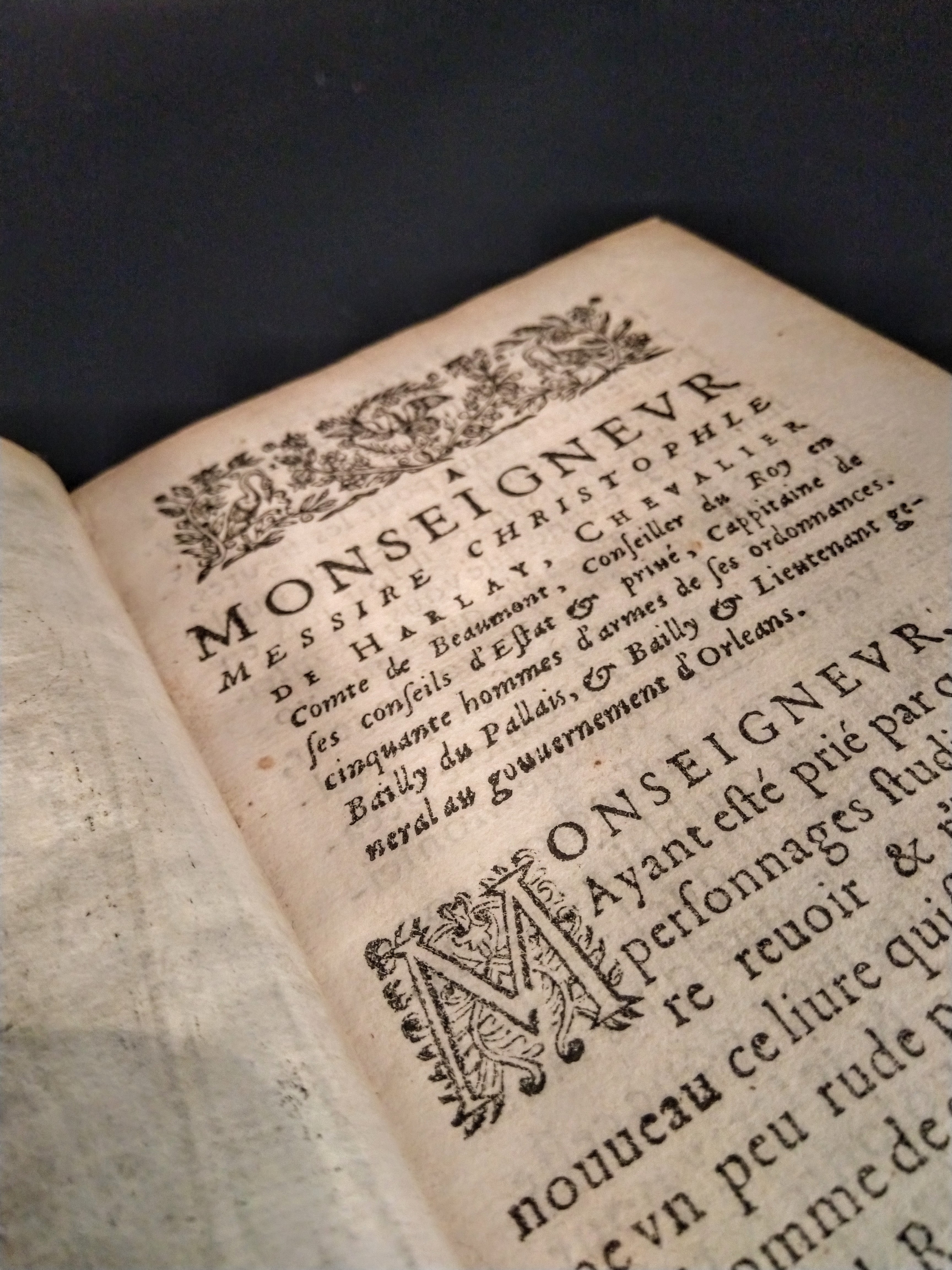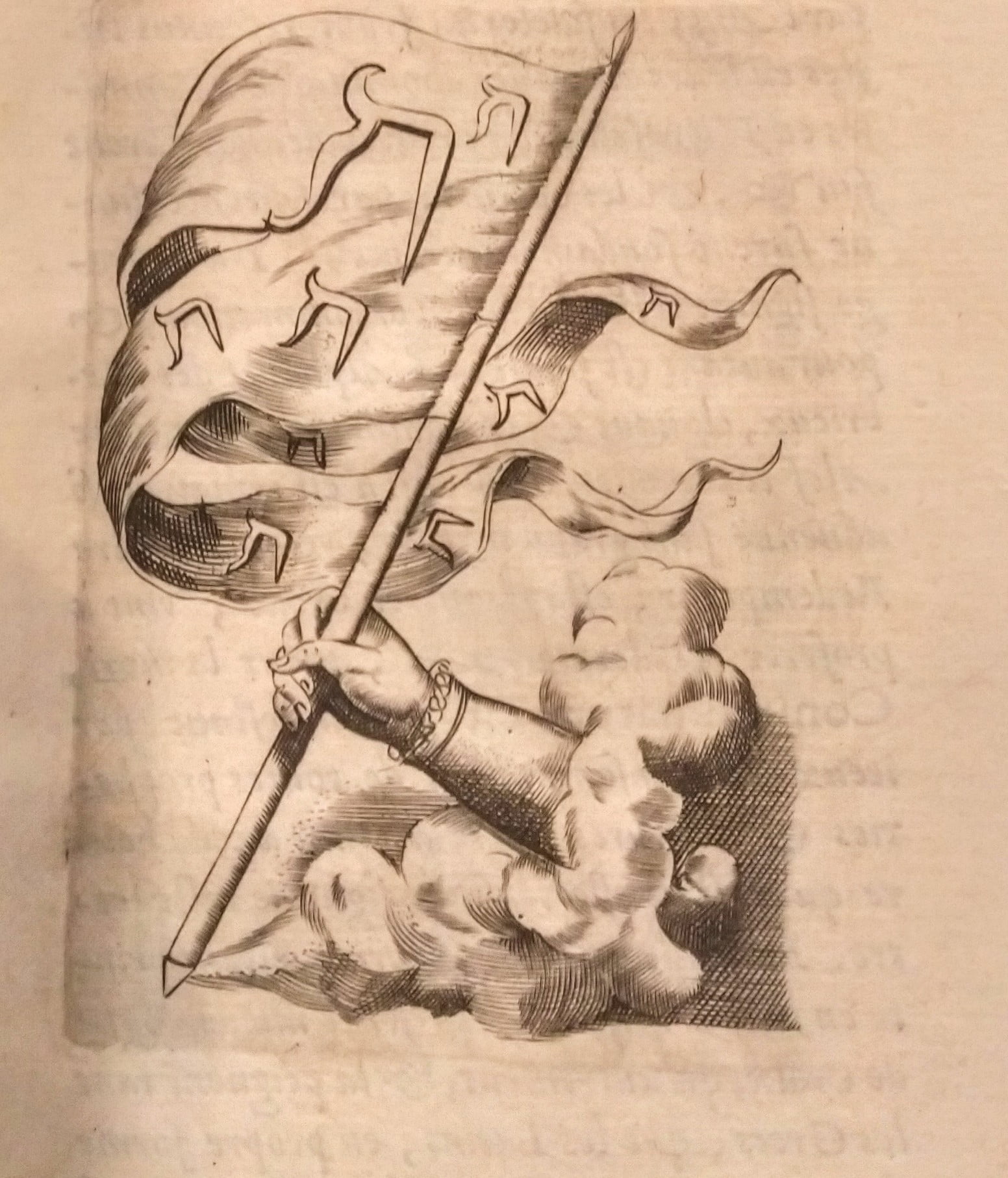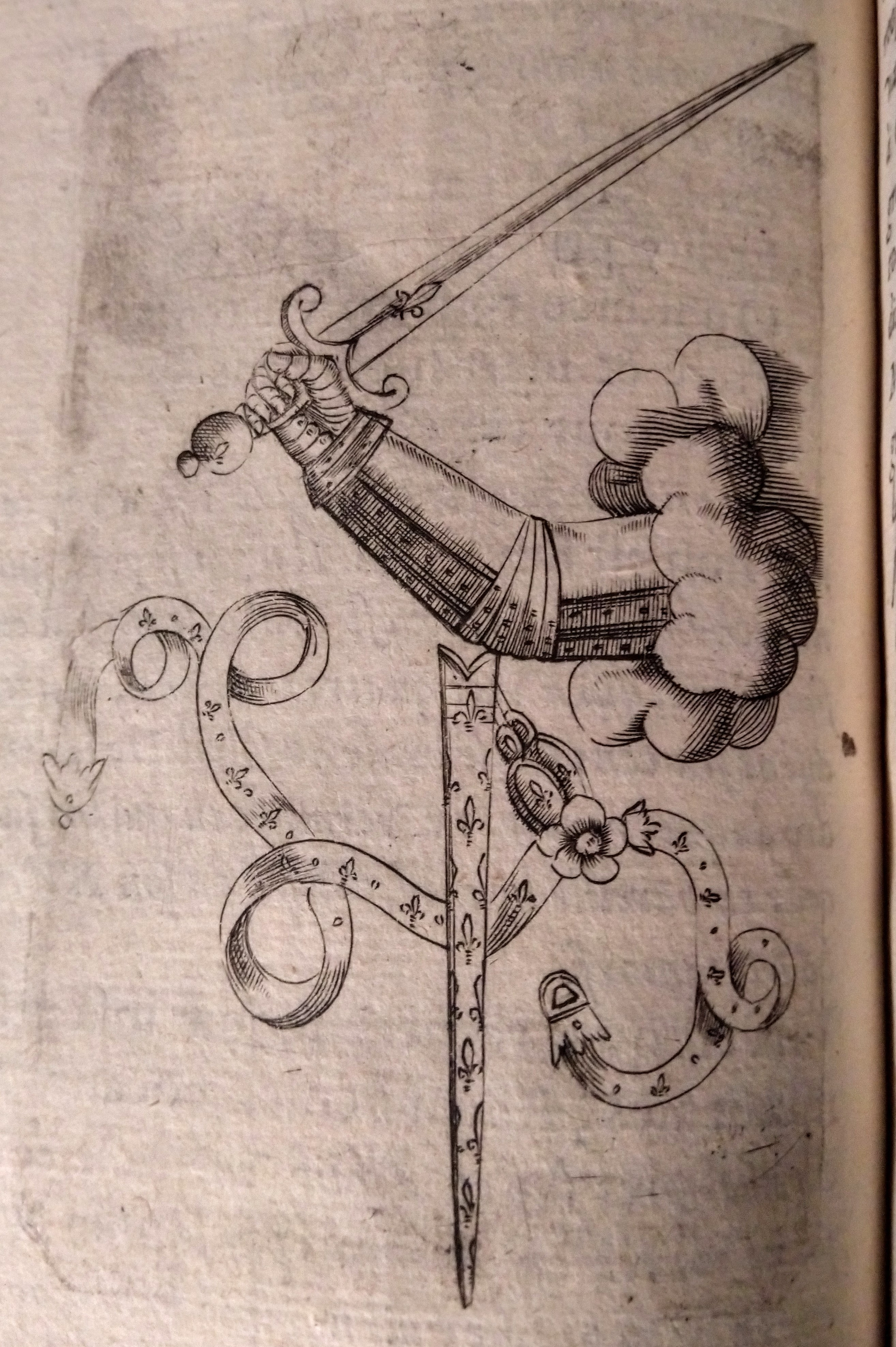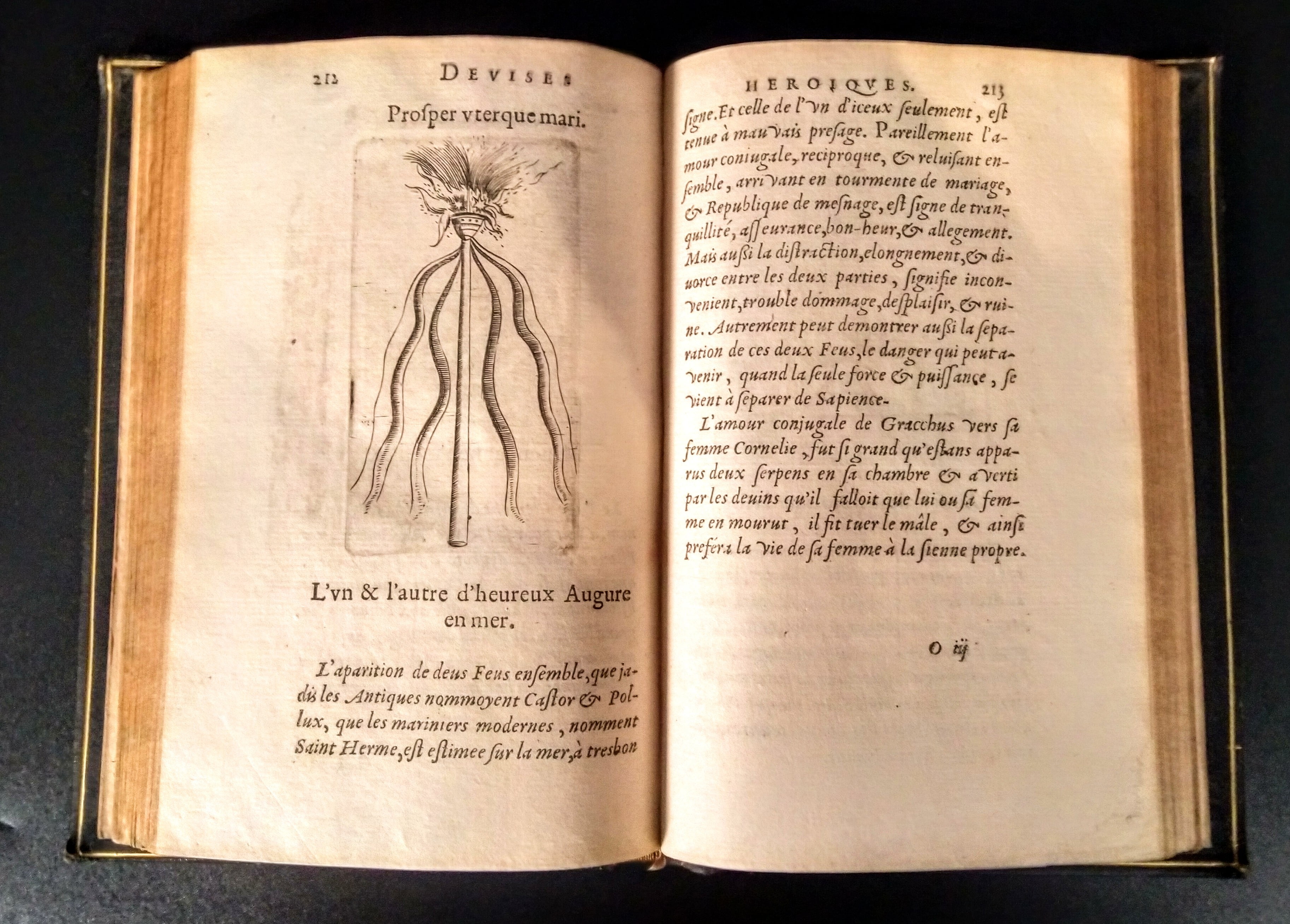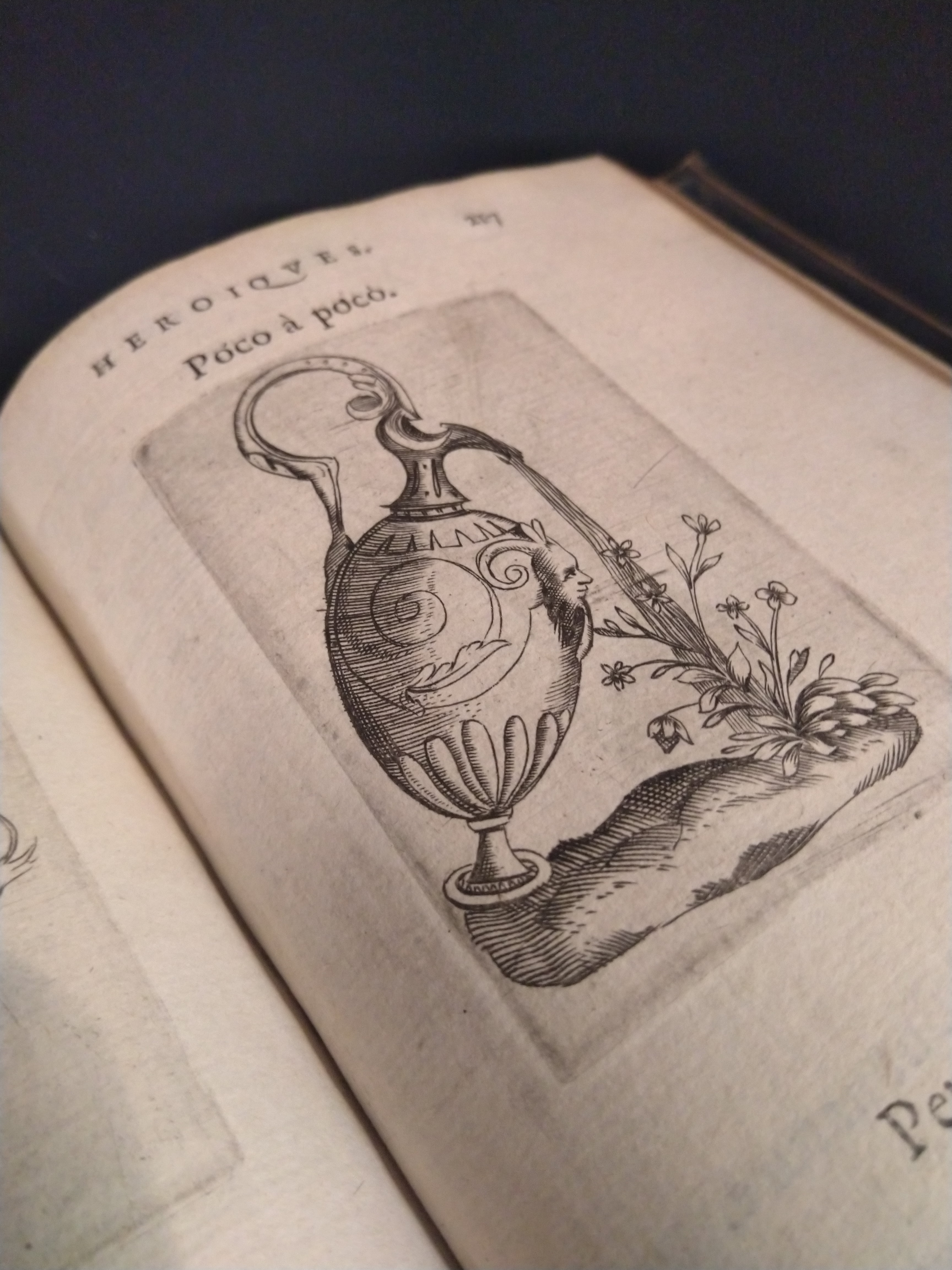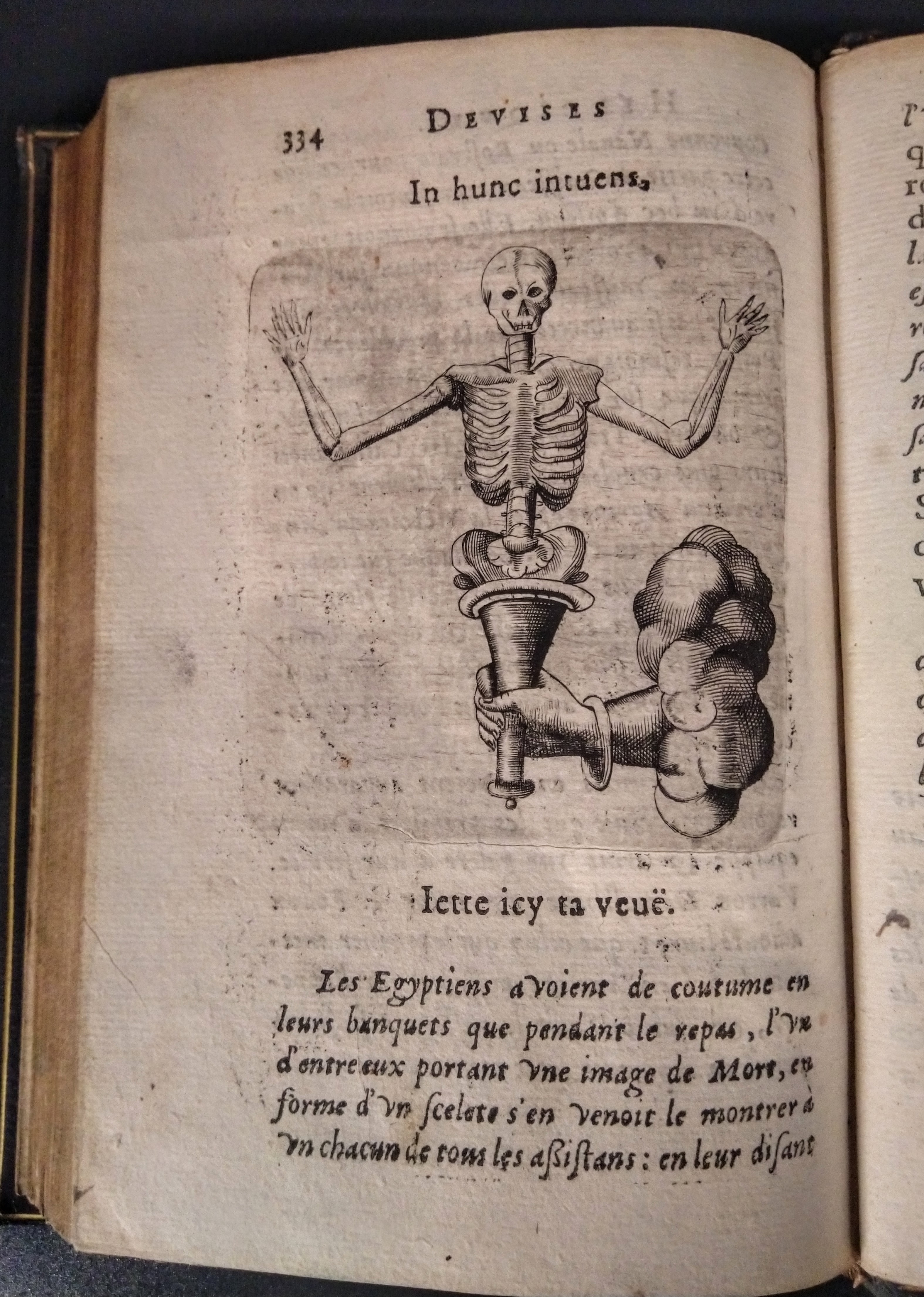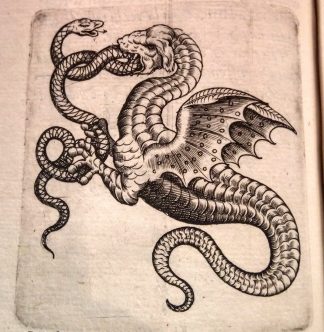PARADIN, Claude
Devises héroïques et emblêmes de M. Claude Paradin, reveues et augmentées de moytié [by François d’Amboise]
Paris, J. Millot, -1614£2,250.00
FIRST EDITION thus. 8vo., pp. (iv) 340 (iv). Italic letter, some Roman. Fine engraved title, figures at sides, and above, with emblems in roundels, 174 small engraved emblems in text, woodcut initials and headpieces, ‘White Knights No. 3056’ pencilled note to front free endpaper. Light age yellowing, occasional minor mark or spot. A very good copy, the engravings in good impression, in handsome early 19th century dark blue straight-grain morocco, covers bordered with a single gilt rule, spine with raised bands gilt ruled in compartments, small gilt circles at centres, gilt lettered direct., inner dentelles gilt, a.e.g., a little rubbed at extremities.
First edition of Claude Paradin’s influential book of emblems augmented by a commentary by Francois D’Amboise, beautifully illustrated with 174 emblematic engravings. Paradin first published his ‘Devises heroïqves’ in 1551; publication was taken over by Christophe Plantin in Antwerp from 1561, with the addition of 37 ‘devises’ and the inclusion of a Latin translation of the combined text order to provide for a wider reading public. It was later published in a Dutch translation in Antwerp in 1563 and in an English translation in London in 1591 and then in this revision in Paris with a commentary by Adrien d’Amboise. Paradin’s work was influential in England: Mary Queen of Scots, held at Tutbury Castle, and Bess of Hardwick knew and used Paradin’s emblems in the design of embroidered hangings. “Interest in Emblems and interest in devices had from the earliest days of the genre run hand in hand, and this pattern also continues in the seventeenth century. The pioneering collections of devices compiled by Simeoni, Giovio and Paradin were all extremely popular in France in the first half of the the sixteenth century, but somewhat surprisingly no French versions of Giovio were published after the 1560’s although interest in the work of the native French Paradin was more enduring, with editions of his devices continuing to be published in France into the first two decades of the seventeenth century. ..An expanded French edition of the work of Paradin .. was published in 1614. .. This lasting popularity was not reserved just to France. As well as these seventeenth-century editions of Paradin in French published in Paris.. the popularity of the work extended to England also, where an English version was published in London in 1591.” Alison Saunders. ‘The Seventeenth-century French Emblem: A Study in Diversity.’
Paradin was innovative in the introduction and explanation of his emblems, introduced in his second edition. “This second edition of 1557 offers a version of the text which is markedly different from that of the original edition published by De Tournes in 1551. There the work was much smaller, containing only 118 devices, whereas the 1557 edition contains 182. But more significantly the nature of the work is changed: the original version giving a set of basic devices comprising woodcut figure plus motto, is transformed in 1557 by the addition at the end of each device of a French commentary explaining its significance, and identifying the person who used it, or – in the case of the unattributed devices – the universally applicable lesson which could be derived from them. In this new form – which became the norm for subsequent editions – Paradin’s work is thus far more informative and overtly moralistic than in its original text-free form. Its increased ‘educational’ dimension is reflected also in the marginal notes accompanying the prose commentaries, identifying sources.” French Emblems at Glasgow.
The dispersal of the library amassed by George Spencer-Churchill (1766-1840), Marquess of Blandford and later fifth Duke of Marlborough, at Whiteknights is most commonly cited today as a preservative against folly. The collection contained some of the most sought-after incunabula of a period defined by the high prices paid for early printed books. It included a fine selection of Caxtons, spectacular botanical and emblem books, and the iconic Valdarfer Boccaccio – the first edition of the Decameron, purchased by Blandford in 1812 for the unprecedented sum of GBP2,260. The Boccaccio was symptomatic of the profligate expenditure of its buyer. By 1819 his spendthrift ways had ruined him, leading to the sale of his opulent estate at Whiteknights, near Reading, and the dispersal of one of the key libraries in the era of bibliomania.
BM STC Fr. C17th P188. (1622 edn only) Landwehr, Romanic, 571; Adams, Rawles & Saunders F.468. Praz p.444-445.In stock


